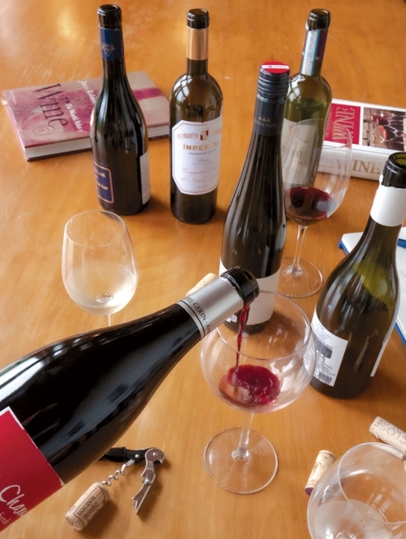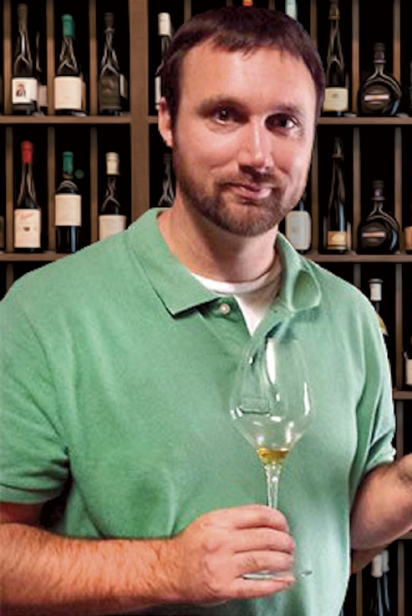Virtual Vino - How to Host a Fun Wine Tasting
How to host a home wine tasting—online
When COVID- 19 first began spreading through Texas, James Barlow, wine and sake buyer for Spec’s Wine, Spirits & Finer Foods, thought that his employer would possibly take a hit much like the rest of Texas’ hospitality industry. What he didn’t expect is that sales would actually take off.
“I guess I thought because restaurants were closing down that sales would also go down because we do sell a good amount to restaurants, but what surprised me is that our retail side started doing phenomenally, almost like Christmas every day,” Barlow says. “As a fine-wine buyer, it’s allowed me to have some fun with different wines because these cult wineries that typically only sell to restaurants are now reaching out to us because they need to sell their products. Price points haven’t gone down, either. People are still drinking fine wine because even though life is stressful they still want to enjoy life and enjoy good wines.”
Due to the restrictions on restaurant capacities and the CDC’s recommendation against large social gatherings, wineries and restaurants have had to change the way they create hospitality experiences with consumers. And in that vein, more virtual food and wine tastings have come into play at the industry level as well as in the home.
Barlow has experienced numerous winery tastings at his home and says the experience has introduced a new level of intimacy and education for him. “I’ve had a few tastings with places like Bluerock Vineyard and Shannon Ridge, and it’s been such an in-depth, meaningful feel,” he says. “You get to see these winemakers’ passions come out over the screen, and they really get to speak to their wines in a whole new way. You don’t always get that in an in-person tasting because there are so many other distractions going on. I’ve actually enjoyed the virtual experience.”
For those who want to host their own virtual tastings at home, Barlow has some suggestions for how to achieve the same level of intimacy and education as a fine winemaker. First and foremost, he says, choosing a theme or region is the best way to begin planning a successful tasting.
“There are obviously so many directions you can go with this, whether that’s New World versus Old World, Cabernet versus Pinot Noir, Bordeaux versus Napa Valley—there are a lot of options. One of the themes I’ve always enjoyed over the years is the Judgement of Paris in 1976, which pitted Old World versus New World wines. That one is always a hit,” he says. “Really, there’s no wrong way to go about this. I suggest doing whatever fits your knowledge level, whether that’s novice or more in-depth, and just go from there.”
For those who want to host their own virtual tastings at home, Barlow has some suggestions for how to achieve the same level of intimacy and education as a fine winemaker. First and foremost, he says, choosing a theme or region is the best way to begin planning a successful tasting.
“There are obviously so many directions you can go with this, whether that’s New World versus Old World, Cabernet versus Pinot Noir, Bordeaux versus Napa Valley—there are a lot of options. One of the themes I’ve always enjoyed over the years is the Judgement of Paris in 1976, which pitted Old World versus New World wines. That one is always a hit,” he says. “Really, there’s no wrong way to go about this. I suggest doing whatever fits your knowledge level, whether that’s novice or more in-depth, and just go from there.”
Next, Barlow says to utilize the knowledge of in-store wine sales staff or the Spec’s app or website to make around six to seven wine selections for you and your guests to sip and sample. However, Barlow says that because attendees will have to go buy the bottles themselves to do the tastings virtually, it is perfectly fine to choose fewer samples to fit everyone’s budget.
“If you are comfortable going into the store, our staff is very well educated and able to help you make the selections you are looking for, but our website and app are also just as up to speed and capable of guiding you through that process”
Depending on themes and number of bottles, Barlow also says that it’s always nice to start with a sparkling wine and then include around three red wines and two white wines with a selection of foods like cheese, crackers, meat, olives and any other proteins or carbs that pair well with the vinos. “I tend to suggest more red-heavy tastings because more people here prefer them even though it’s 160-thousand degrees outside in [the summer]. We have air conditioning to make up for it.”
And while tasting notes are something you’ll find at winery and restaurant tastings, Barlow says the inclusion of tasting notes is up to the discretion of the host. “I find that people usually don’t want to be found wrong in their observations, so they aren’t as eager to share their notes with everyone else, but I encourage people to share,” he says. “I like to tell people what I’m tasting and just ask questions, and that usually gets people to open up more. People usually enjoy giving a rating system, too. Whatever fits the knowledge of your crowd will determine how detailed you get with things like fruit, alcohol, tannins, acid and the overall structure of the wine.”
As for including Texas wines in a virtual tasting? Barlow says a decade ago he would have advised against it, but now he says there are quite a few worthy of inclusion, such as McPherson Cellars’ Viognier—a white wine—and Dave Phinney’s Locations TX, a red blend. Barlow says the fact that Phinney, a world-class winemaker and creator of the wildly famed “The Prisoner,” is making a Texas wine says a lot about how far the industry has come over the years.
“I think 10 to 15 years ago, Texas was just trying to get their name out there and they were making a lot of bad juice. They were also buying a lot of California juice and trying to pan it off as Texas juice,” he says. “About two years ago, I was asked to do another Texas tasting and I was blown away. Texas winemakers are finding their place in the world. They’re understanding much better that it’s not about growing Cabernet Sauvignon where Cabernet Sauvignon shouldn’t be grown. It doesn’t work in Texas very well and neither does Pinot Noir or Chardonnay. The heartier Spanish varieties or Italian varieties like Tempranillo or Sangiovese or Garnacha can be made very well in Texas.”






